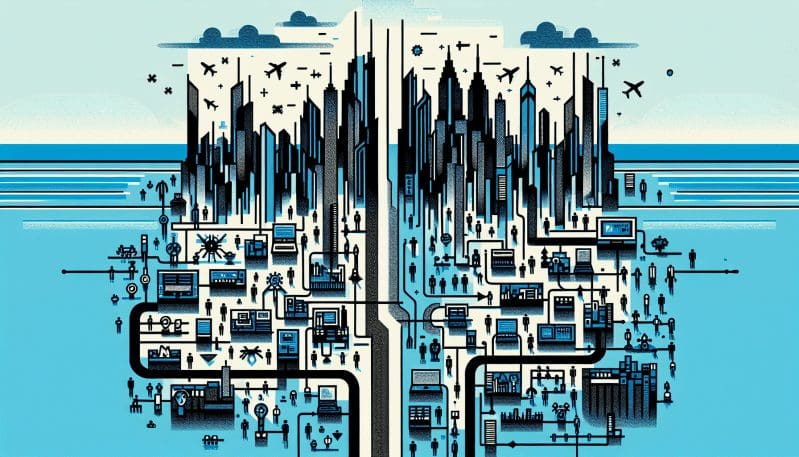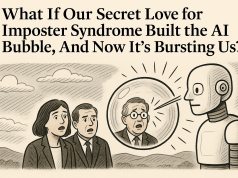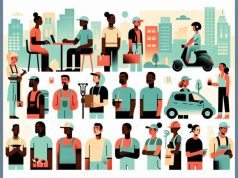As the skyline of New York City continues to evolve and stretch ever upwards, so too does its labor landscape shift under the burgeoning weight of the gig economy. This modern labor phenomenon, defined by short-term contracts or freelance work as opposed to permanent jobs, has etched profound marks on the traditional employment fabric of the city. It beckons us to question whether the gig economy paves a road toward a sustainable future or steers us perilously close to a precarious race to the bottom.
The gig economy has reshaped the concept of work in New York, with businesses like Uber, Lyft, and a smorgasbord of on-demand service apps transforming the way New Yorkers live and work. For many workers, the shift has heralded an era of increased flexibility. Freelancers and independent contractors can often set their own hours, select their workloads, and achieve a sort of autonomy that is less attainable in traditional employment roles. This flexibility can be particularly enticing for the city’s diverse artistic community, small-time entrepreneurs, and students juggling academics with financial independence.
However, this new dawn of labor carries with it significant clouds of uncertainty. Unlike traditional workers who benefit from steady salaries, health insurance, paid leave, and retirement plans, gig workers are often left to navigate a tumultuous sea of economic instability without a lifeboat. The lack of job security and benefits raises legitimate concerns about the sustainability of gig work as a viable long-term career path. When a sudden illness, an economic downturn, or a dip in demand can erase a worker’s income, the very notion of stability becomes a mirage.
Moreover, the impact on New York’s economy is a mosaic of opportunity and challenge. On one hand, the gig economy has catalyzed an entrepreneurial spirit and introduced innovative services that keep the city’s economic gears turning. On the other, it has fueled a contentious debate about income inequality and the erosion of the middle class—a historical backbone of New York’s economy.
Comparatively, the rise of gig work echoes the labor upheavals of New York’s past. The city’s rich labor history, from the garment worker strikes of the early 20th century to the battles over workers’ rights that shaped the New Deal era, reminds us that labor markets are no strangers to transformation. Yet, the question remains: Are we witnessing a transitional phase towards a new paradigm of work, or a retrogression to a bygone era of labor exploitation?
Potential regulatory responses in New York could manifest in efforts to redefine the legal classification of gig workers and ensure that they receive similar protections and benefits as traditional employees. This balancing act of innovation and worker protection is delicate; too stringently regulate, and you stifle the creative and economic benefits that the gig economy can offer. Too lax, and the workforce may spiral into an unprotected abyss.
Ultimately, the path New York chooses to navigate this transition will set a precedent not just for other cities, but for the very future of work itself. It is crucial, then, for regulators, businesses, and workers to engage in an earnest dialogue about the gig economy’s place in the city’s labor narrative. The quest is one for equilibrium, where economic advancement and worker protection do not just coexist, but synchronize in harmony for a fair, prosperous, and forward-looking New York.




























